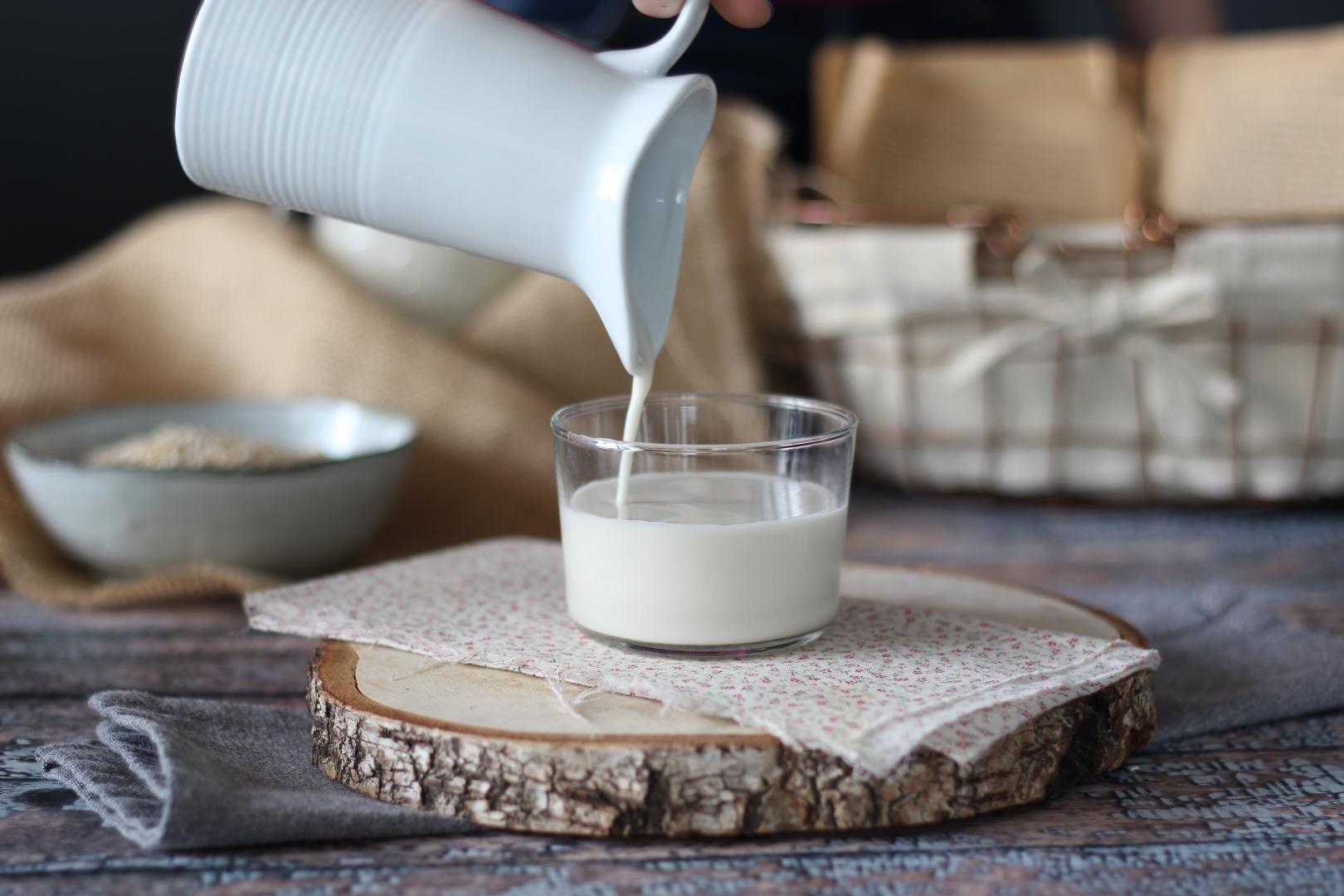Making your own plant-based milk: is it really better for your health?

Between the sometimes mysterious labels on supermarket cartons and the desire to cook more naturally, the question arises: is homemade plant milk really healthier? And above all... is it worth the effort?
Spoiler: between taste, health and small ecological gestures, this choice makes more and more sense :)
What exactly is homemade plant-based milk?
It's a drink made by mixing a vegetable base (nuts, cereals, seeds) with water, then filtering the mixture. Almonds, oats, cashews, rice, hazelnuts, soy... there's something for everyone. The result? A smooth, creamy liquid, perfect for a morning porridge or a latte!
But beyond the practical and trendy aspects, it's above all the nutritional quality and transparency of the ingredients that make all the difference.
Industrial milks: what are they really made of?
What we call "plant-based milk" is actually a "plant-based drink", as the term milk is reserved for animal products. And these drinks may contain much more than you think:
- Only 2 to 8% main ingredient (almond, oat...) - source: 60 Millions de Consommateurs, 2021
- Additives: carrageenans, phosphates, thickening gums
- Added or "masked" sugar (concentrated apple juice, rice syrup, etc.)
- Oils (often sunflower or rapeseed, for texture)
Dr. Anthony Fardet, nutrition researcher at INRAE, points out that "the more a food is processed, the less healthy it is". Yet many industrial plant milks are ultra-processed products as defined by the NOVA classification...
Homemade plant milk: healthier, really?
The good points:
- Controlled ingredients
No preservatives, additives or hidden sugar. This is the very basis of healthy eating: knowing what you're putting on your plate (or in your bowl).
- More nutrients
While industrial almond milk contains 3% almonds, a homemade version can easily contain 10-15%. The result: more fiber, protein, magnesium and natural calcium (notably in almonds, hazelnuts and sesame seeds).
- Lower glycemic index
Especially for homemade milks based on unsweetened whole grains (oats, rice). Good news for those seeking to stabilize blood sugar levels or avoid cravings.
- Respect for the environment
Less transport, less packaging. According to a study by The University of Oxford, plant milks have a carbon footprint 3 to 10 times smaller than cow's milk, depending on the raw material (Poore & Nemecek, Science, 2018).
Limits to be aware of:
- No fortification
Unlike commercial milks, homemade versions are not enriched with calcium, vitamin D or B12. For vegan people, it's important to supplement these intakes in other ways.
- Shorter shelf-life
A maximum of one week in the refrigerator. So prepare reasonable quantities.
- Less "practical" for everyday use
Blending, straining, cleaning... it all requires a bit of organization (but it's also a way of slowing down and reconnecting with your kitchen).
How to make homemade plant milk (and why it's easier than you think!)
Basic ingredients :
1 & 2/3 cups rolled oats
4 & 1/4 cups cold water
Optional: 1 date for sweetening, a pinch of salt, a hint of vanilla
Steps :
- In a blender, blend the cold water and rolled oats for 1 minute.
- Place a filter bag in a bowl and pour the mixture into it. Squeeze until there's no liquid left in the bag.
- Your oat milk is ready! Just pour into a bottle and store in a cool place for 1 week.
Bonus: the remaining pulp (called okara) can be recycled to make cookies. You can find the recipe here!
So, homemade or not homemade?
Homemade is a real health plus for anyone who wants to :
- Avoid ultra-processed products
- Consume more nutrient-rich beverages
- Limit waste
- Personalize to taste
But we shouldn't demonize the industrial versions either. Some brands offer simple, enriched recipes for everyday use!
You may be interested in:
 Adèle Peyches
Adèle Peyches

Comments